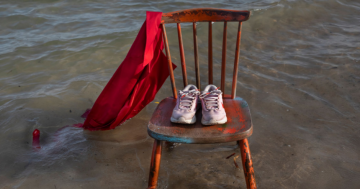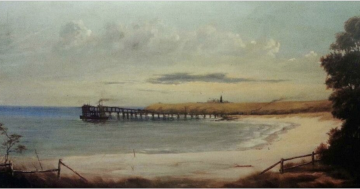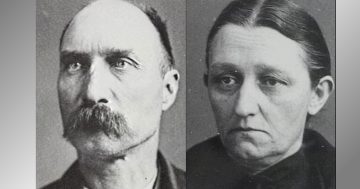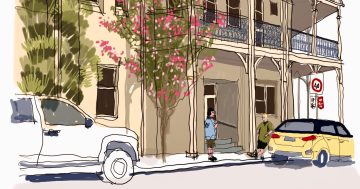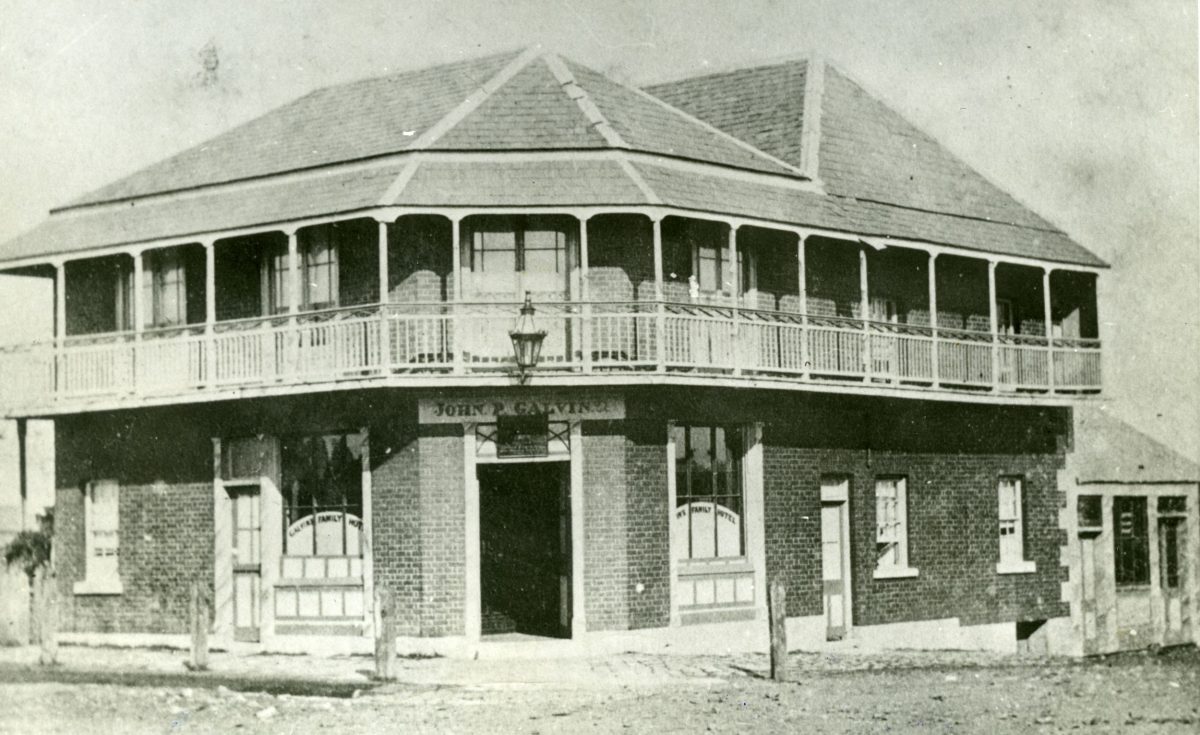
The Cricketers Arms Hotel in the late 1890s. From the collections of Wollongong City Libraries and the Illawarra Historical Society – P02/P02897.
Once upon a time, there were pubs on almost every street corner in downtown Wollongong.
Sadly, most of them are long gone, with tall apartment and office blocks taking their place.
Long-time Illawarra residents will remember the lower end of Crown Street when it was home to the popular Oxford Tavern. Across the road from the Oxford site, on a block extending from the corner of Crown and Corrimal to Burelli streets, was the former Dwyers car yard business.
But before the Dwyers family bought the land, it was home to the Cricketers Arms Hotel, also known as the Sportsmans Arms Hotel.
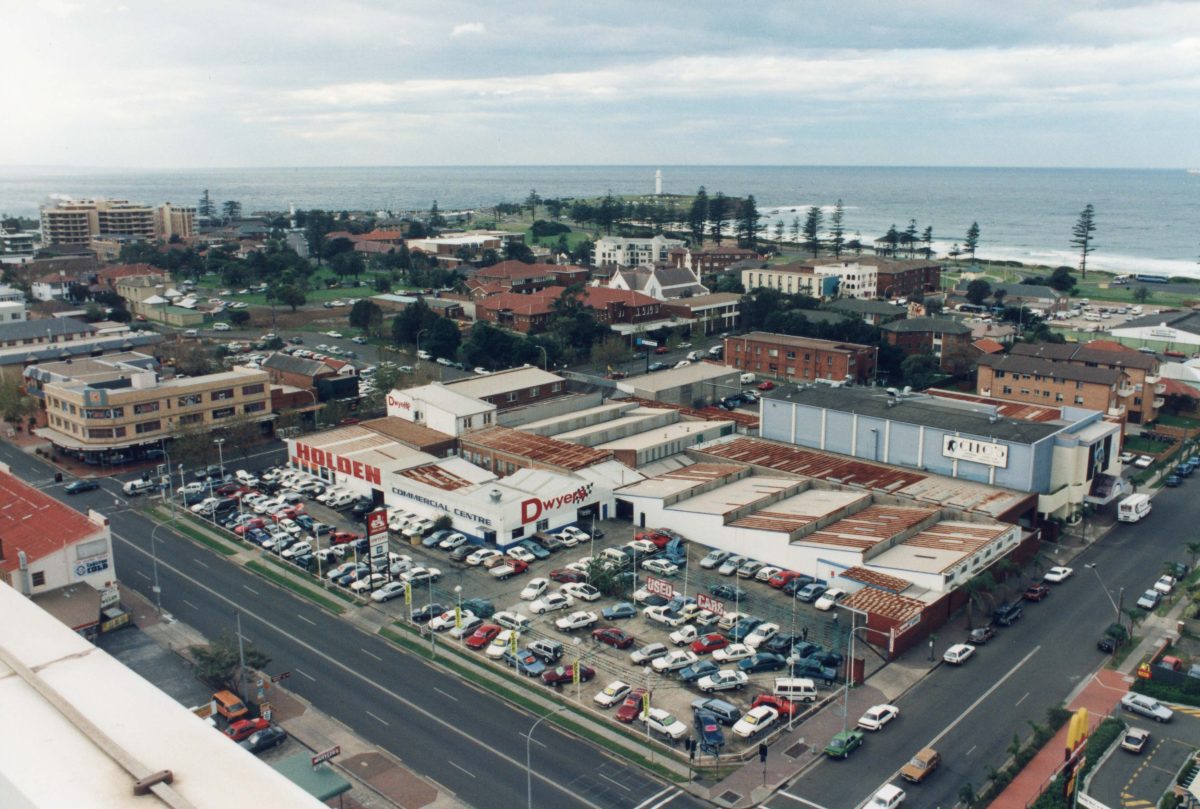
Dwyers car yard on the block bounded by Corrimal, Crown and Burelli streets in 1995. Photo: Wollongong City Libraries and the Illawarra Historical Society – P18/P18089.
The Cricketers Arms – named after three local cricketers John Patrick Galvin, Thomas Galvin and James Rixon – was built by George Organ.
George was an astute businessman and building contractor who acquired land at Bulli as well as allotments in Wollongong. His wife Maria donated the land for the Bulli Hospital. The first licensee was his son-in-law, James Rixon, who had married Emily Organ on 10 March 1853.
George retained ownership of the property but leased it to various licencees. On his death, the property passed to Maria and on her death, it passed to Emily.
When the Dywers site was sold to make way for a major apartment development, excavation of the Crown and Corrimal streets corner revealed foundations of the Cricketers’ Arms Hotel, including the sandstone cellar as well as a large collection of artefacts including coins, bottles and household items. Other remains on the site included the foundations of residential dwellings at the rear and side of the hotel, a substantial brick-lined well and pits used as toilets.
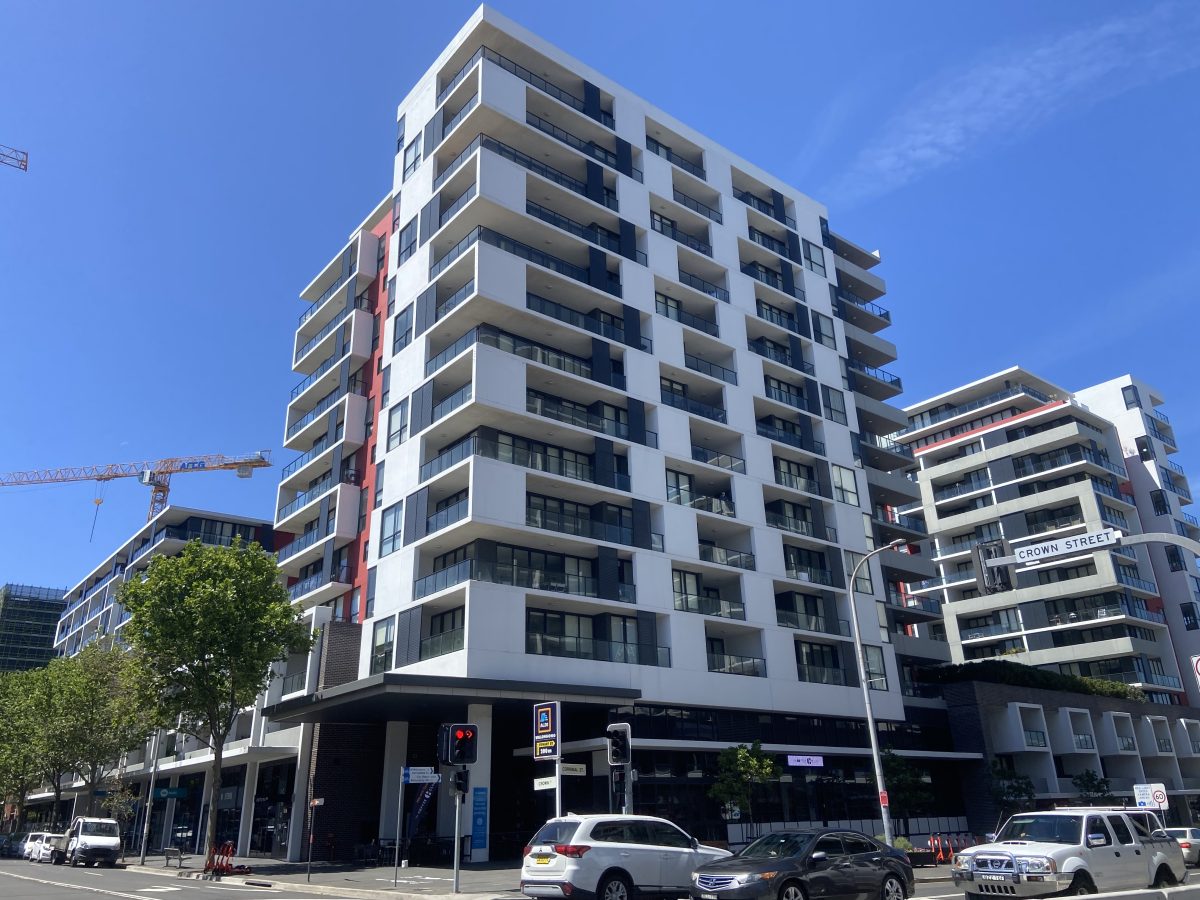
The northern intersection of Crown and Corrimal streets today. Photo: Region Illawarra.
Carol Herben, a long-time member of the Illawarra Historical Society, wrote an article for the Society’s journal in 2007 entitled ‘A pub crawl around Wollongong and suburbs’, which looked at the city’s early hotels. These are some that were featured, starting with the Royal Hotel, which stood on the site of the Oxford Tavern.
Joseph Makin’s Royal Hotel
The hotel on the corner of Crown and Corrimal streets was trading as the Royal Hotel as early as 1864. It was a two-storey brick building with upper and lower verandahs with ornate ironwork around both sides. When Joseph Makin took over he added a third storey. Due to the anti-liquor referendum in 1911, the hotel lost its licence which led to the retirement of Joseph and Rebecca Makin. Their son George Frederick Makin reopened the hotel as the Oxford Hotel in August 1916. The third storey was removed due to termite damage and the lacework surrounding the verandahs was replaced with fill-in. By 1930 the verandahs were all removed and the building took a new art deco appearance. It eventually became the Oxford Tavern, with an extension on the site of the old Temperance Hall. The Oxford was a popular live music venue until it closed in 2010.
Springhill Hotel
The first hotel recorded in Wollongong’s local history was on the western side of Springhill Rd at Port Kembla. Built about 1825 by George Tate as an Inn, it was licensed between 1829 and 1832. Charles Waldron took over in September 1832 but when he died under controversial circumstances, his grant was officially given to his widow Jemima Waldron in June 1835. By then the building was known as Spring Hill House. It was a building typical of the earliest settlers’ slab timber construction. Most of the estate was retained in the Waldron family until 1920 when sold to the Public Works Department. The building was demolished some time around 1940.
Brown’s Inn/Lake Illawarra Hotel/Brownsville Hotel
Brown’s Inn was once located in Church St, Wollongong, in the area of MacCabe Park where the War Memorial now stands, then known as Baxter’s paddock. George Brown arrived free in 1822 and built and operated Brown’s Inn from 1827-1834. In 1834 he moved out to the Brownsville area and built a flour mill and the Ships Inn. The Ships Inn burnt down around 1843 and Brown then built a new two-storey hotel he named Lake Illawarra Hotel. After George’s death, his eldest son George William Brown was granted a Publican’s General Licence for the hotel then known as Illawarra Hotel. About 1889 the name changed to Brownsville Hotel and it traded under that name until 1937. The building is located in Prince Edward Drive. Today it remains a private residence. Note: Brownsville was named after George Brown.
Brighton Hotel
A two-storey building that was on the corner of Harbour St and Cliff Rd, Wollongong, the Brighton Hotel operated as the Waterloo Stores from about 1839 until 1854. The building was taken over by William Howell who was licensed to operate the Black Swan Family Hotel. In March 1856 Edward Johnson purchased the hotel and it was renamed the Brighton Hotel. A long-serving licensee, Neil Meara, who was also a cabinet maker and undertaker, took possession of the hotel in the 1860s and extended it to Cliff Rd. George Osborne, a hotelier in Dapto from 1870-73, advertised his business in June 1873 in the Illawarra Mercury, informing his patrons that he had “now opened commodious premises in Harbour Street known as the Brighton Hotel, trusting to receive continuous favours. The Wines, Beers and Spirits will be found to be of the best quality”. The Brighton catered for the travelling public who arrived by steamer at Wollongong Harbour. John Patrick Galvin purchased the premises at auction in December 1880 and the licence was surrendered in 1919, two years after his death.
Mount Keira Hotel
Hugh Higgins built and operated the Mount Keira Hotel, a single-storey building on the highway at Figtree. Higgins appeared before the Licensing Court in April 1857 for selling alcohol to an overly intoxicated man which brought about the man’s death, despite the fact the death occurred 12 months prior in April 1856. He was cautioned against the recurrence of such events. By the 1870s the hotel was in the ownership of John William Clarke and a second floor was added, along with other buildings. After the death of John Clarke in 1882 his son George took over the running of the hotel business. Sometime between 1920 and 1950 the buildings were demolished and the only remnants of the hotel left is the single storey building and the Moreton Bay fig which still marks the site today, just south of the Hellenic Club on the Princes Hwy at Figtree.
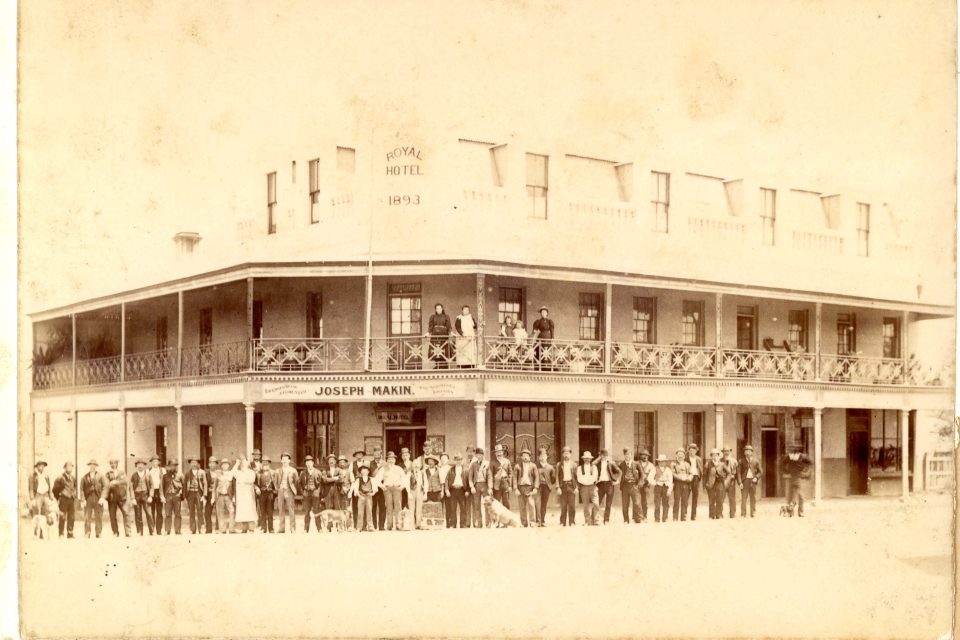


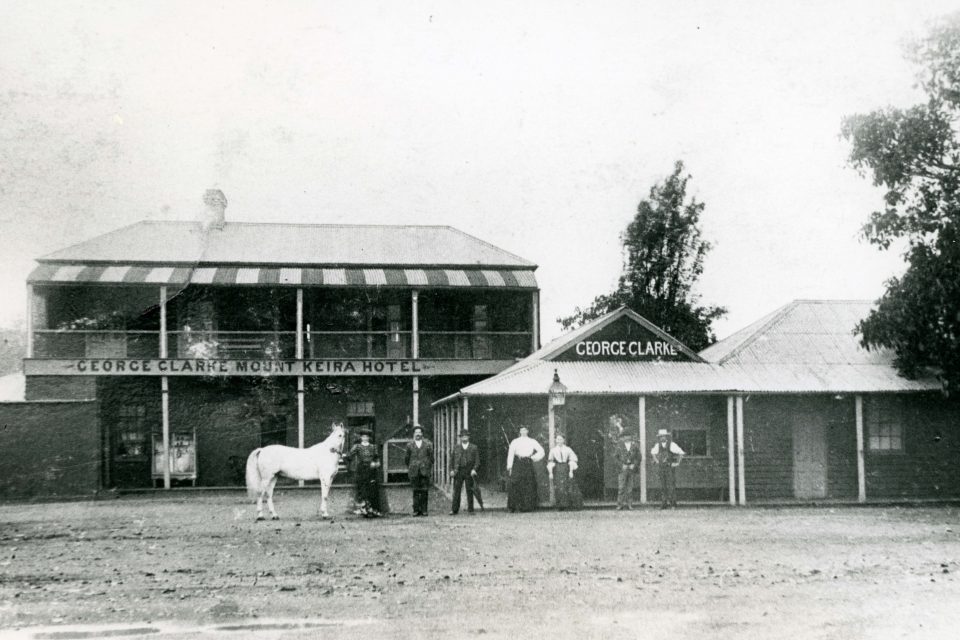

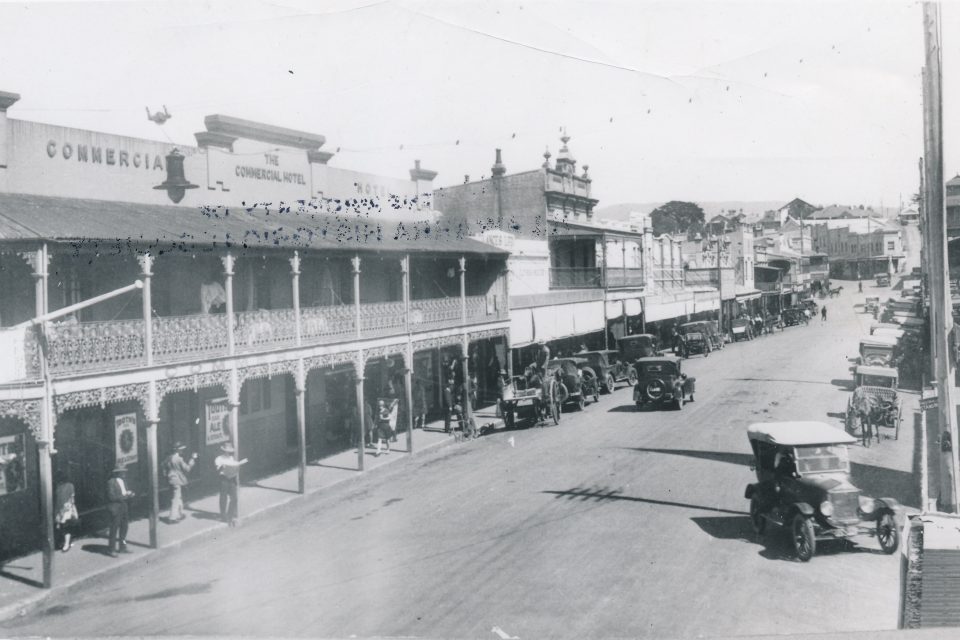
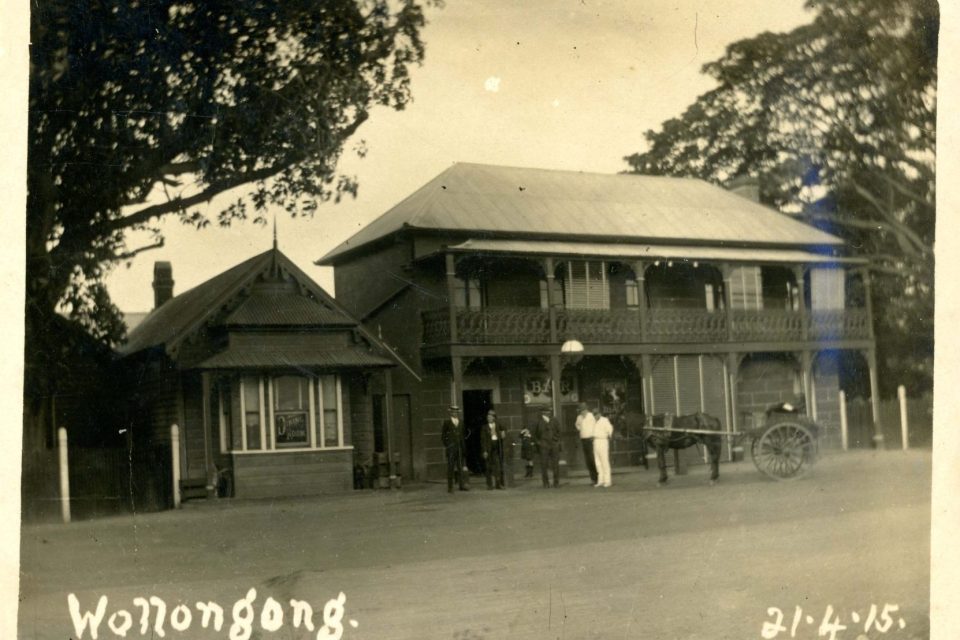


Harp Hotel/Harp of Erin
Bernard McCauley bought a four-room cottage on Corrimal St in 1839 and opened the Harp Hotel. The building was leased to John Musgrove about 1843 and a new single-storey hotel was built. When Bernard McCauley died in 1858, the hotel was left to his daughters Catherine Beatson and Margaret Davis and they renamed it the Harp of Erin. Catherine purchased her sister’s share, and later changed the name back to the Harp Hotel. Under licence to Henry Hulbert in the early 1890s, it was eventually replaced by a two-storey building in the late 1890s. The verandah at the front overlooking Corrimal Street had lace ironwork with cast iron verandah posts. It was demolished about 1960 and replaced with another two-storey red brick building. The Harp Hotel continues to trade today and would be the longest that a hotel has traded under the same name in Wollongong on the one site.
Commercial Hotel
The Commercial Hotel was built some time before 1850 on the corner of Crown and Church streets, Wollongong and operated by John Hetherington. It was a large two-storey building of brick construction with lace work on the awning. John drowned at Broughton Pass in 1857 and his widow Jane carried on the hotel business after his death. The hotel was operated by Eliza Osborne by 1885 and then by George Cochrane. The rear of the hotel was the arrival and departure point of the Mt Kembla Coach Service. The hotel continued to operate under the same name until the late 1950s when it was demolished. The former David Jones store stands on the site.
Hotel Victoria/Bodes Hotel/North Wollongong Hotel
The Hotel Victoria, in Flinders St North Wollongong near the intersection of Bourke St, opened for trading in 1864 under the ownership of Carl Theodore Bode. It was a small two-storey brick building with the verandah surrounded by cast iron lacework. The central piece of the hotel was the magnificent staircase to the upper accommodation level. The hotel remained in the management of Bode until his death in 1912. His widow managed the hotel for some years until she passed away in 1923, when the management was taken over by their son George. In 1937 Arthur Jones bought it and renamed it North Wollongong Hotel. Christina (Chrissy) James became the manageress in 1949 and gave the hotel a complete makeover. Known locally as the North Gong Pub, it no longer resembles the hotel that was the pride of the Bode family for some 60 years.
Terminus Hotel/Tattersalls Hotel/Dicey Rileys
The Terminus Hotel started operations about 1885 in Crown St, Wollongong, near the railway station to cater for the railway workers and then train passengers when the first stage of the Sydney/Wollongong railway opened in 1887. It was a two-storey building with lace iron work railings and turned posts. After 1904 a major facelift was undertaken on the building and the hotel then commenced trading as Tattersalls Hotel. In the mid 1990s the name was changed to Dicey Riley under which it still trades.
Bellambi Hotel
In 1886 William Wilson, Manager of South Bulli Colliery, purchased 16 acres of land at Bellambi. He built his home (known as Wilgendene) in Jones Place Bellambi and the hotel in Bellambi Lane, a short distance away. When William died in 1896 his wife Lillian took control of his affairs including the hotel. Bellambi Hotel was built on a comer and like many hotels the attraction was the comer entry to the bar. It still trades under the same name, on the corner of Bellambi Lane and Brompton Rd.








